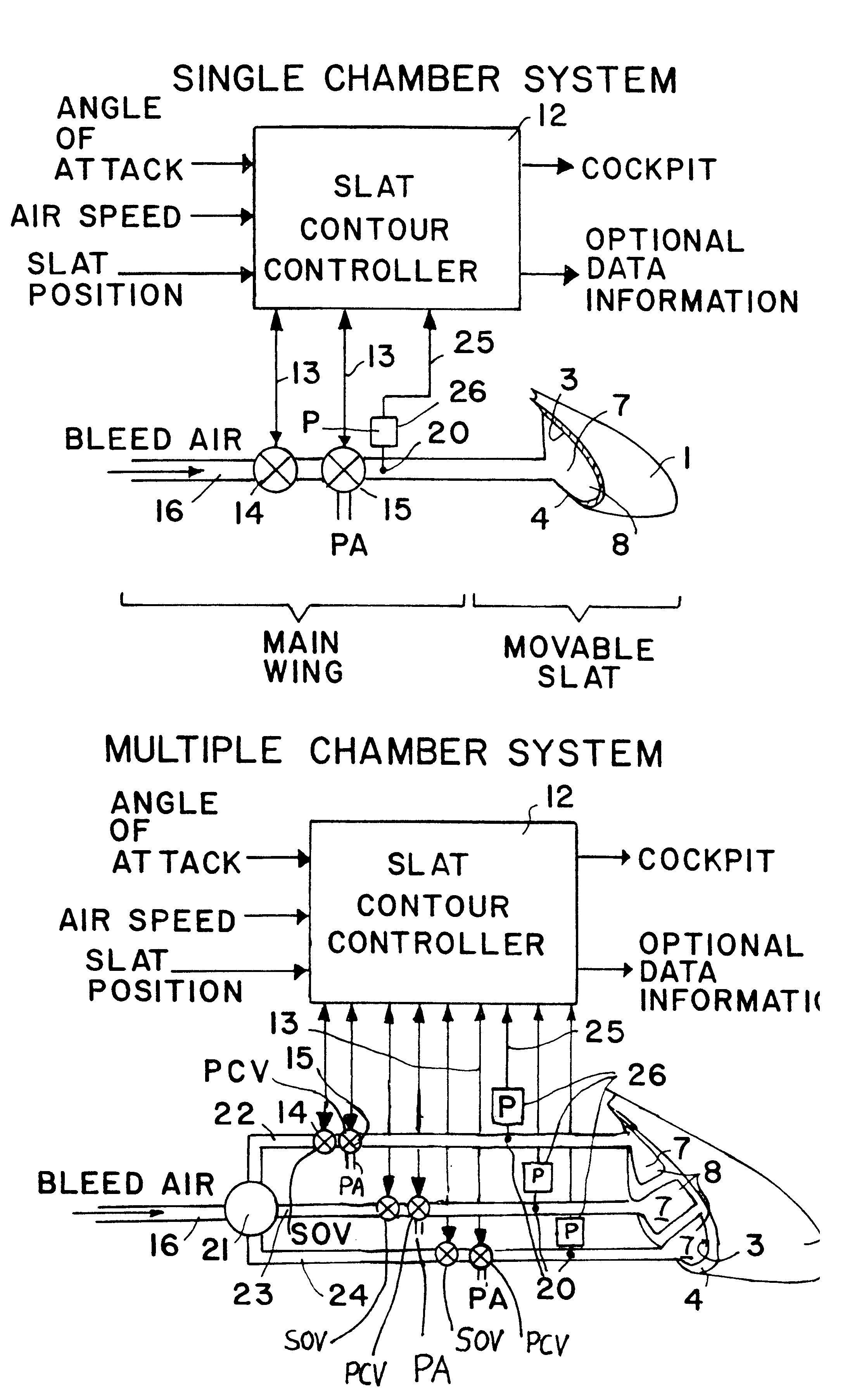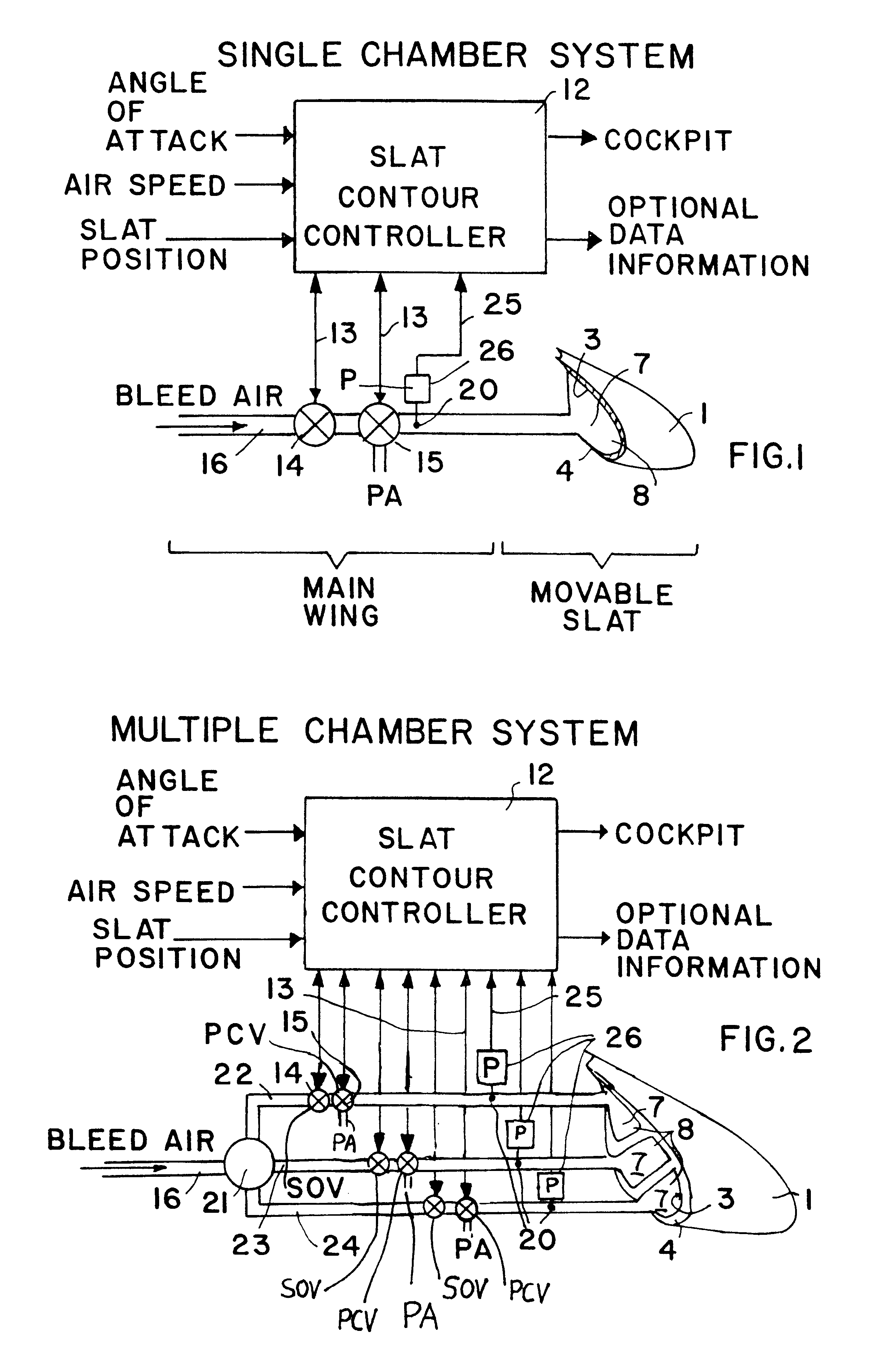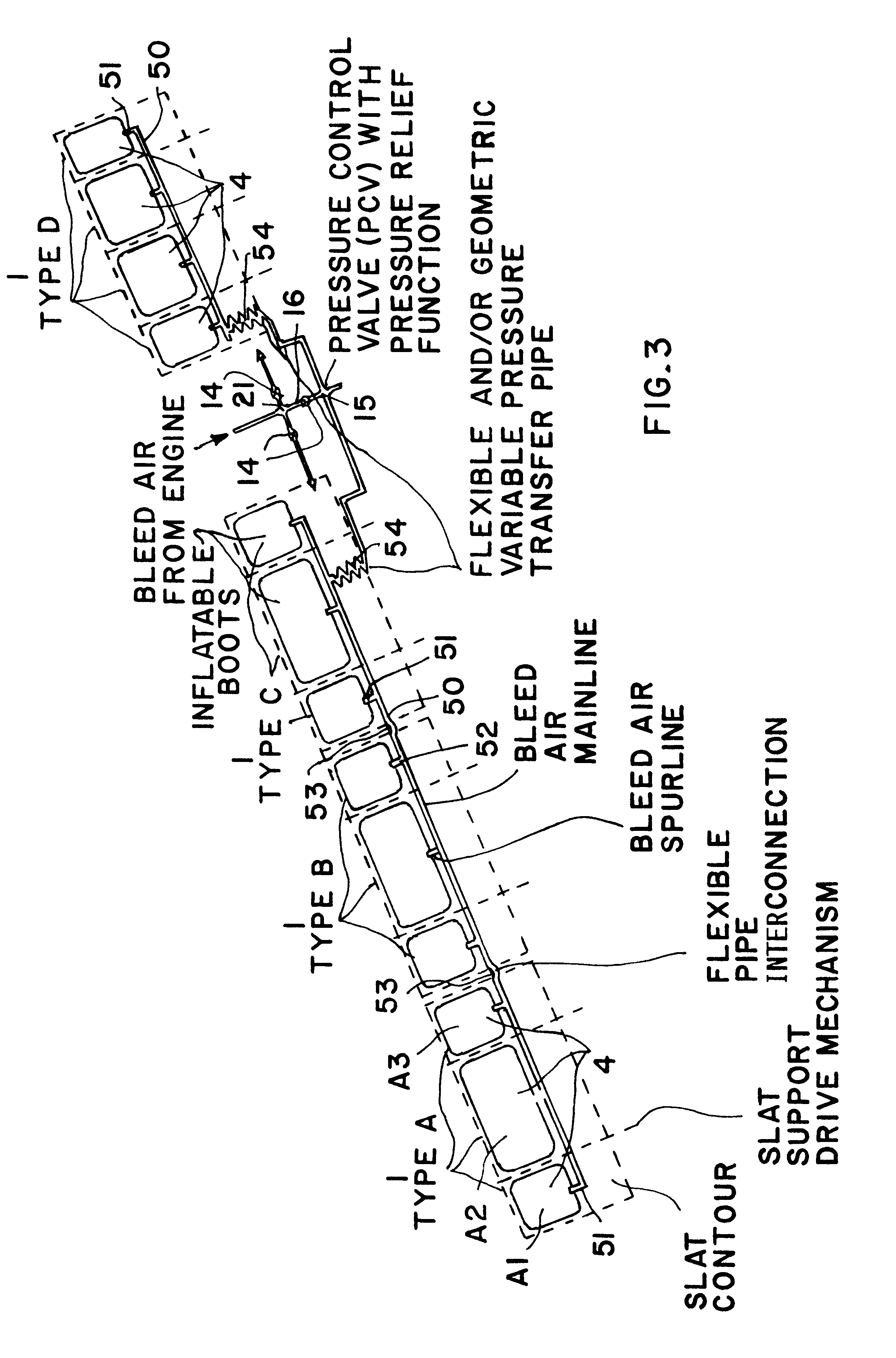Pressure control system for a pressure-expandable displacement element
a technology of displacement element and pressure control system, which is applied in the direction of airflow influencers, transportation and packaging, sustainable transportation, etc., can solve the problems of aerodynamic noise generated, aerodynamic noise generated, and becoming an evermore significant portion of the total flight nois
- Summary
- Abstract
- Description
- Claims
- Application Information
AI Technical Summary
Problems solved by technology
Method used
Image
Examples
Embodiment Construction
The general structure of a main wing 2 with an extended high-lift slat 1 and an extended landing flap 11, as well as the aerodynamic flow streamlines A associated therewith, in a conventional arrangement, have been discussed above in connection with FIG. 5. The general object of the invention is to avoid or reduce the formation of the vortex 150 along the slat 1 while improving the aerodynamic configuration of the slat air gap 130 when the slat 1 is in the extended position, while still allowing a proper full retraction of the slat 1 against the leading edge nose 2A of the main wing 2. The inventive arrangement shall not have disadvantageous influences on the aerodynamic characteristics, such as the lift and the aerodynamic resistance, but rather actually improves these aerodynamic characteristics. More particularly, the main point of the invention is to provide a controlled inflation of an inflatable displacement element, so that it has a proper operation and shape so as to achieve...
PUM
 Login to View More
Login to View More Abstract
Description
Claims
Application Information
 Login to View More
Login to View More - R&D
- Intellectual Property
- Life Sciences
- Materials
- Tech Scout
- Unparalleled Data Quality
- Higher Quality Content
- 60% Fewer Hallucinations
Browse by: Latest US Patents, China's latest patents, Technical Efficacy Thesaurus, Application Domain, Technology Topic, Popular Technical Reports.
© 2025 PatSnap. All rights reserved.Legal|Privacy policy|Modern Slavery Act Transparency Statement|Sitemap|About US| Contact US: help@patsnap.com



